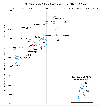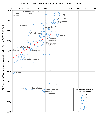Variation In Telemedicine Use And Outpatient Care During The COVID-19 Pandemic In The United States
- PMID: 33523745
- PMCID: PMC7967498
- DOI: 10.1377/hlthaff.2020.01786
Variation In Telemedicine Use And Outpatient Care During The COVID-19 Pandemic In The United States
Abstract
Coronavirus disease 2019 (COVID-19) spurred a rapid rise in telemedicine, but it is unclear how use has varied by clinical and patient factors during the pandemic. We examined the variation in total outpatient visits and telemedicine use across patient demographics, specialties, and conditions in a database of 16.7 million commercially insured and Medicare Advantage enrollees from January to June 2020. During the pandemic, 30.1 percent of all visits were provided via telemedicine, and the weekly number of visits increased twenty-three-fold compared with the prepandemic period. Telemedicine use was lower in communities with higher rates of poverty (31.9 percent versus 27.9 percent for the lowest and highest quartiles of poverty rate, respectively). Across specialties, the use of any telemedicine during the pandemic ranged from 68 percent of endocrinologists to 9 percent of ophthalmologists. Across common conditions, the percentage of visits provided during the pandemic via telemedicine ranged from 53 percent for depression to 3 percent for glaucoma. Higher rates of telemedicine use for common conditions were associated with smaller decreases in total weekly visits during the pandemic.
Figures



References
-
- Mehrotra A, Chernew M, Linetsky D, Hatch H, Cutler D. The impact of the COVID-19 pandemic on outpatient visits: practices are adapting to the new normal. Commonwealth Fund. Published June 25, 2020. Accessed July 15, 2020. doi: 10.26099/2v5t-9y63. - DOI
Publication types
MeSH terms
Grants and funding
LinkOut - more resources
Full Text Sources
Other Literature Sources
Medical

